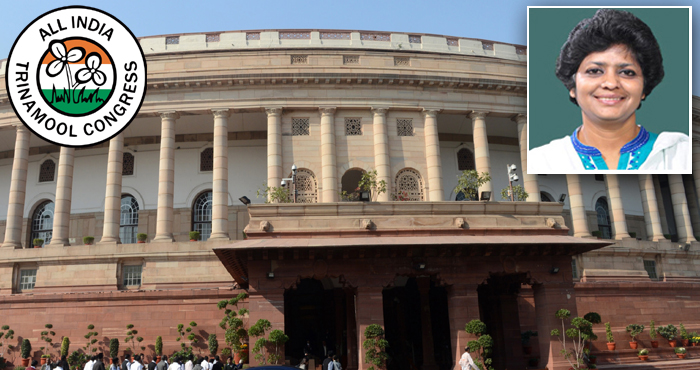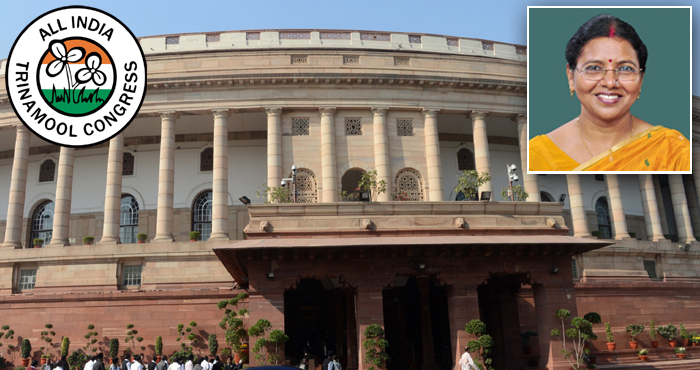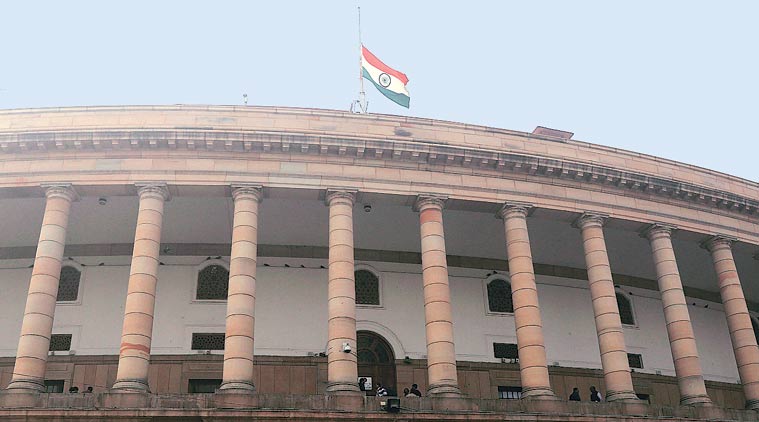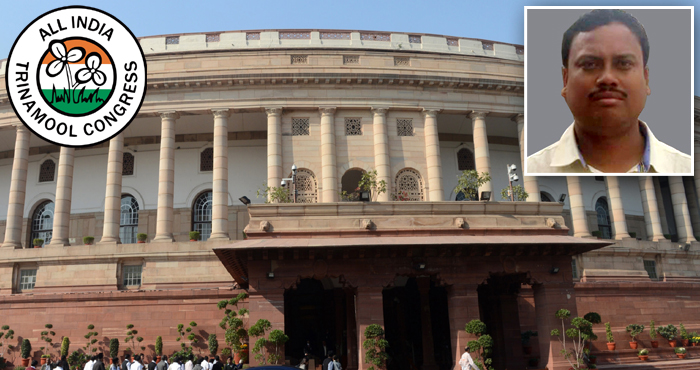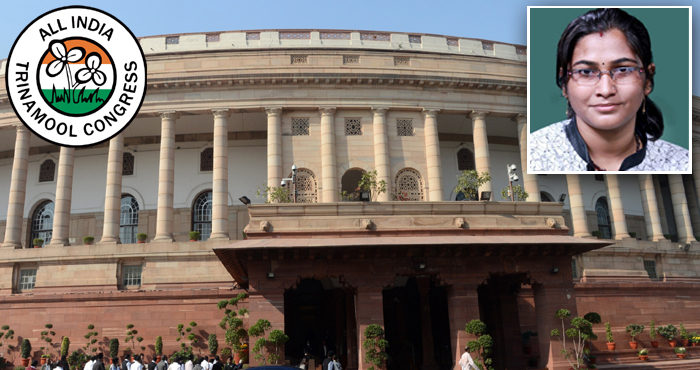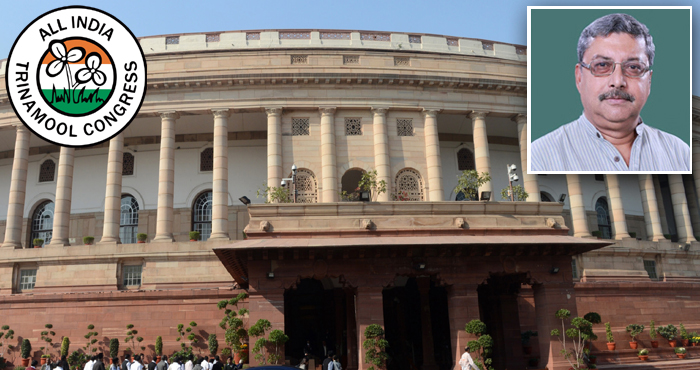FULL TRANSCRIPT
I stand here on behalf of All India Trinamool Congress in support for the Demand for Grants for the Home Ministry. But it saddens me that Hon’ble Finance Minister is not here to consider that. Is this not an important subject? In the Budget speech, on page 36, he has given a list of important ministries and Home Ministry is not listed among those. It is saddening that the government does not consider that Home Ministry is important.
I think that internal security is one of the most important issues by which we live safely in this country. The Home Ministry takes care of the internal security and we have the brave jawans who are protecting us. Even before starting I want to pay respect to all jawans who have lost their lives to protect us over the last few years.
I would also like to congratulate this government for selecting a lady as the director general of SSB. I think this is a first time in history a lady is commanding the SSB. I congratulate the Minister. I also would like to request him that there was a decision and he promised to have about 33% reservation for women in the forces. But as of today we have about 6% and these girls are working very hard to protecting us. They are deployed in the international borders; they are maintaining law and order.
This House has very rightly passed the maternity Benefit Bill. I would request the Hon’ble Minister to consider giving the women in the forces a posting close to their homes for two years after they give birth to a child so that they can take of the little future citizens.
I would also like to congratulate this government and Hon. Minister for increase in the scholarship of the children of the jawans and raising the amount of money and the number of children to be included – both boys and girls.
After all the congratulations, let us come to the sour points. Our country has a very long international border. The land border is more than 15,106.7 km and the coastline is 7,516.6 kilometers. We share the borders with eight different countries out of which some are friendly countries; we also have non-friendly neighbouring countries. But the fencing is not complete.
The forces that guard us, guard our motherland, guard our very favourite Bharat Mata, are the Assam Rifles, BSF, CISF, CRPF, SSB, ITBP whose authorised strength has been 9,67,816 but as of today vacancies of 73,464 jawans are lying vacant. I would request, when you are filling them up, honourable Sir, please give cognizance to the girls also who are doing very well. The ladies are doing very well, we’ve been to the borders and we’ve seen how they work hard.
Today we have the foreign terrorist groups, we have the threat of ISIS, we have cyber crime but the budget allocation – right from grant number 46 to 47,48,49 up to 53 – has been reduced. The percentage increase over 2016-17, as far as the grant number 46 is concerned, is minus 48.6 percent. For grant number 48 – for police budget – it is minus 3.65% and overall it is minus 5.93%. Instead of increasing the budget, the budget has gone down.
If we look at the expenditure, then for grant number 46, we have spent least amount in the year 2016-17. Over the last three fiscals, 80 percent funds have only been spent. I wonder how? On one hand when we inquired why the jawans don’t have the mine-protective vehicles in the left wing extremism areas, we were told there is no money to buy those vehicles. But here we see that the money is not being spent. So there surely seems to be a gap between expenditure and the requirement and the allotment. This is a matter of serious concern.
As far as police grant is concerned, if we consider the Budget Estimate, the Revised Estimate and Expenditure, even that is the lowest in the last three fiscals and the whole amount has not been spent. This year for machine and equipment only 1.7% of the whole has been given and for arms and ammunition 1.46% has been given. We think that this has to be increased because when our poor jawans are facing the terrorists they have to be equipped to the T. They have to be more equipped than the terrorists to take them on and protect our motherland. I don’t understand why the allotment has been slashed as far as the cybercrime registry, the crime and criminal tracking system and the left wing terrorism heads.
I would also like to draw the attention of the Hon. Minister here that the condition of women in this country, the safety and security of the women in the country is still at stake. It was only three days ago, on the day of Holi, a young mother was gangraped and to save her life she had to jump from the first floor of a building here in the city of Delhi. So let us imagine the plight of women all over the country, specially in rural areas. She lay on the streets without her clothes for several minutes before an auto-rickshaw wala come and took her to the police station.
We are sometimes talking about a mobile app for women which will come on the smartphones. My question to you, Sir, through Honorable Chair, is how many of our rural women, how many of the agricultural worker women, how many of labourer women have smartphones? Only 27% of this country uses smart phones. So if the app is on a smartphone, no girl while being tortured can dial that app to get the police.
You have to think of some better way by which we can protect our women. The Nirbhaya Fund was not spent and when the Nirbhaya incident had taken place it had been decided that one or two constables will remain in all the buses in the evening. I don’t know whether those constables are still there. The problem remains because we are running short of staff. Like I said, about 73,000 jawans and constables are required for proper functioning but they have not been appointed.
I would also like to draw the attention to the August House, through you Sir, that between July, 2016 and January, 2017, the number of law and order incidents that shook up Jammu & Kashmir was 2392; number of civilians killed was 73 and the number of forces killed was 2.
In the North Eastern region we experienced 484 incidents in which 87 extremists were killed, 17 forces were killed and 48 civilians were killed. It looks like a war has been waged around our borders.
Among the forces, we have an elite force known as the National Security Guard. There are four regional hubs – Kolkata, Chennai Mumbai and Hyderabad. They are doing good. I know about the Kolkata setup because it is located close to the airport. I have been writing and it has been all futile. The hub is just a five minutes drive from the airport but the area is congested. So, I have given one year’s MPLAD fund so that they can build a subway which people can use so that the road is kept empty for the NSG jawans and the 160 battalions of BSF, to reach the airport when the requirement comes.
Through you I would like to request the Hon. Minister if a flyover can be built for them so that they can reach the main road which is about 3 km away from their hub; from there the airport is around 2 km away. God forbid if anything happens in the eastern region of the country they will be able to move very fast. BSF and NSG hubs are located just opposite one another on Badu Road.
I would also like to draw the attention of this August House, through you Sir, that India is, a very large country with a very long international border with a long coastline. It is because of the unguarded coast that we had the misfortune to see the day our enemies took a boat and came up to Maharashtra and shot people dead.
Now, I understand that in the Runn of Kucch in Gujarat there is always water making it difficult to have the fence. I understand that in Sunderbans, we have the tidal waves making it difficult to maintain the fence. But, in spite of the difficulties, we will have to think of something innovative.
For the last seven eight years that I have been talking about this and I have been hearing that we are getting technical support from international friends to have laser, fences, thermal detectors and night vision gadgets. But, till date, that is not there and every night hundreds of infiltrators coming through these open porous borders.
The BSF has to be more careful but they are also standing for hours together, Sir, guarding the borders. So, if we can have more number of jawans, then the shift can be of lesser hours and they can be more alert.
The fencing is not complete anywhere, Sir. As far as Bengal is concerned, see we have about 2,828 km of fencing out of sanctioned 3,326. Similarly, we have this kind of border gaps in Rajasthan, Gujarat and Punjab area.
Sir, in the coastal areas we have these floating BOPs. But I have been time and again requesting that these border outposts which are floating – the speedboats have been given, no doubt, but we don’t have the technology. There are no drivers who can drive the speedboats. So, they are lying. We need technical support for the maintenance of those boats; we need technical support for their total functioning, which is not happening. This should be considered and some funds should be given for this.
The other thing is that the State police is demanding watchtowers. Up to a certain distance, it is the duty of the BSF, and after that it is the responsibility of the State police. Unless we have watchtowers we would not be able to watch the coastal areas when people are coming in at night, and also when animals are being crossed over during the day or night. So money should be sanctioned for building watchtowers, and roads too.
There is so much to say because of the concerns of internal securities, Sir. The defence personnel who are located at high altitudes, beyond 15,000 feet, are not getting enough supplies, Sir. They are our children, they are looking after us. We understand it is very difficult to grow vegetables there, but we are trying, of course; but they are dying either of snowstorms or avalanches. So we have to take care of them in a better way so that they can look after us better.
I would like to draw your august attention to the fact that funds under many heads were left unspent – for example, the funds for the Registrar General of India are fully unspent, then under the heads of town mapping and modernisation of data dissemination, and the filling up of vacant posts. We also need to give special attention to cyber crime and NATGRID. We would be grateful if you could consider these.
Thank you, Sir.

